Fix: Programs open on Second Monitor instead of Main Monitor
You may fail to open programs on the main (or the required) monitor if the multi-monitor configuration is not proper. Moreover, outdated Windows or system drivers may also result in the error under discussion.
The issue arises when the user fails to launch applications (or a particular application/game) on the main (or his required) monitor and the applications are launched on the second monitor.

Before moving on with the solutions to open programs on the main monitor, check if extending the display solves the issue. Moreover, if you are using a launcher (e.g., Steam client) to launch the game, then, usually, the game will be launched on the same monitor where the launcher is running (unless defined otherwise in the game/launcher settings).
Also, monitors connected through the HDMI/Display Port cables may be preferred over DVI/VGA by your OS and to rule out the case, try to set the monitors connected through the HDMI/Display port as the main display or if possible, connect the DVI/VGA port monitors with HDMI/Display port (you may have to use an adapter). Last but not least, make sure any of the displays do not go to sleep before the closing of the system.
Solution 1: Update the System Drivers and Windows to the Latest Build
Windows and system drivers are continuously updated to add new features and patch the known bugs. You may encounter the error under discussion if your system drivers and Windows version are outdated. In this case, updating system drivers and Windows to the latest build may solve the problem.
- Update the Windows version of your system to the latest build. Make sure optional updates are also installed.
- Then update system drivers to the latest builds. If you are using a drivers’ update utility like Intel Driver and Support Assistant or Dell Support Assistant, then use it to update the drivers.
- After updating Windows and system drivers, check if the multi-monitor issue is resolved.
Solution 2: Close the Window in the Windowed Mode on the Required Display
Windows usually open the applications on the monitor where they were closed. Try the steps mentioned below but these steps may not work for the full-screen games (try to put the game in the windowed or borderless mode) or applications like word editors (when you open another document, it may launch on the wrong monitor).
- Launch the problematic application and let it completely load.
- Now put the application in the windowed mode (not maximized nor minimized) by clicking on the Restore button (the square button, next to the windows close button) and drag-drop the application on the required monitor.
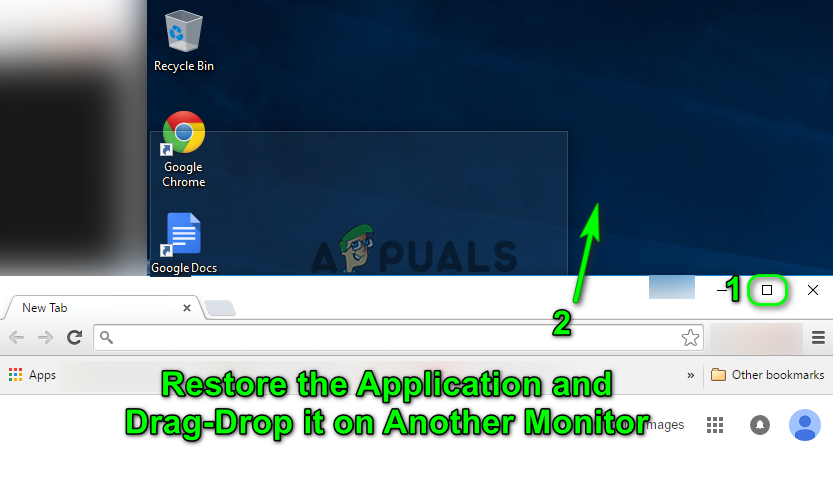
Restore the Application and Drag-Drop it on Another Monitor - Then, without maximizing or minimizing the application, close the application, and check the system’s tray for any background operation of the application. Also, make sure no process related to the problematic application is operating in the Task Manager of your system.
- Now check if the monitor issue is resolved. If so, then on the next launch of the application, you can use it in maximized windows mode.
- If not, repeat steps 1 to 3 but when closing the application, hold the Ctrl key and then check if the issue is resolved.
Solution 3: Re-enable the Wrong Monitor
The issue at hand could be the result of a multi-monitor configuration glitch and the glitch can be cleared by disabling/enabling the wrong monitor.
- Close the application and make sure no process related to it is operating in the Task Manager/ tray of your system.
- Then right-click on your system’s desktop and choose Display Settings.

Open Display Settings - Now, select Display in the left half of the window, and then, in the right half, scroll down till you find the option of Multiple Displays and select the wrong display.
- Now choose Disconnect This Display and reboot your PC.
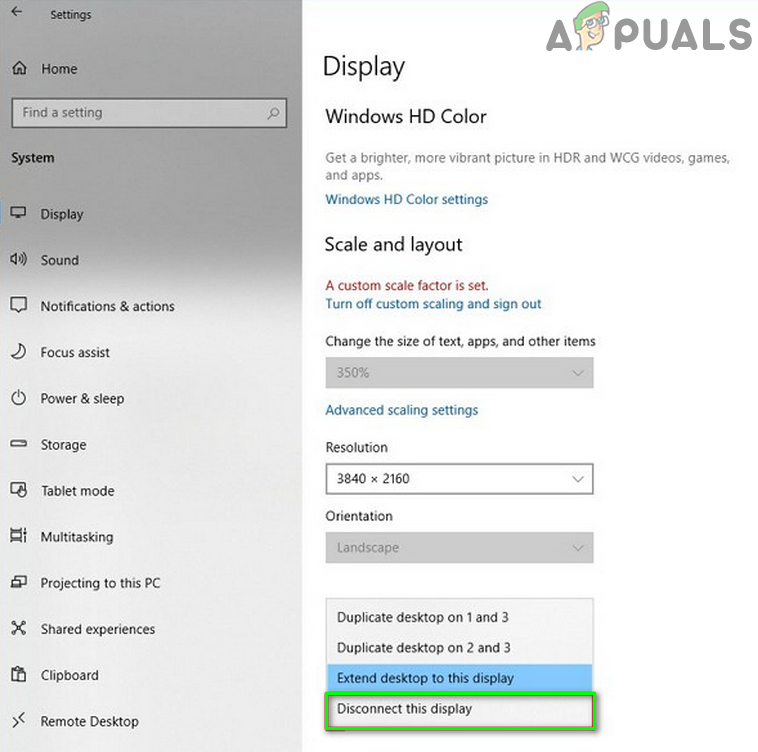
Disconnect the Wrong Display - Upon reboot, relaunch the application on the desired monitor and then exit the application (repeat step 1). Now re-enable the wrong monitor and check if the issue is resolved.
- If not, remove the monitor once again (steps 1 to 4) and launch the Quick Settings menu by simultaneously pressing Windows + X keys.
- Now open Device Manager and then expand the View menu of the Device Manager.

Open Device Manager - Then click on Show Hidden Devices and expand Monitors.
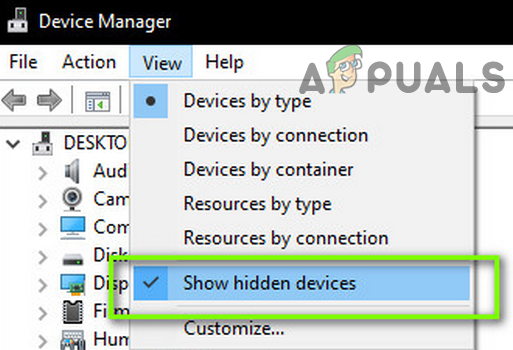
Show Hidden Devices in Device Manager - Now remove all the monitors except your current monitor and then reboot your system.
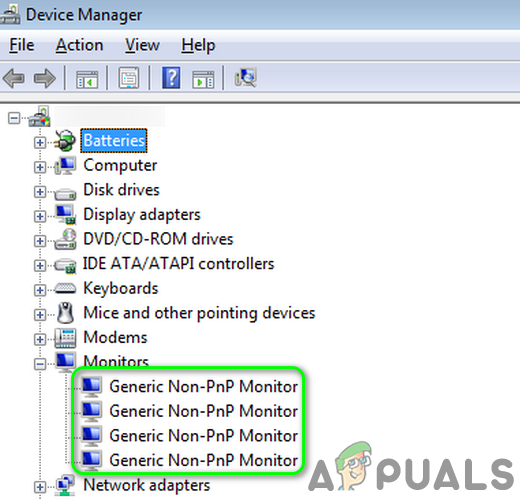
Remove All the Monitors Except the Current Monitor - Upon reboot, repeat steps 5 & 6 to check if the issue is resolved.
Solution 4: Change the Main Display to Another Monitor
Many applications prefer to launch on the main display of your system. In this case, setting the required monitor to be the main display may solve the problem.
- Completely exit the application and forcefully close processes related to it through the Task Manager of your system.
- Then hit the Window key and choose Settings. Now open System and then, in the Display tab, scroll down to the option of Multiple Displays.
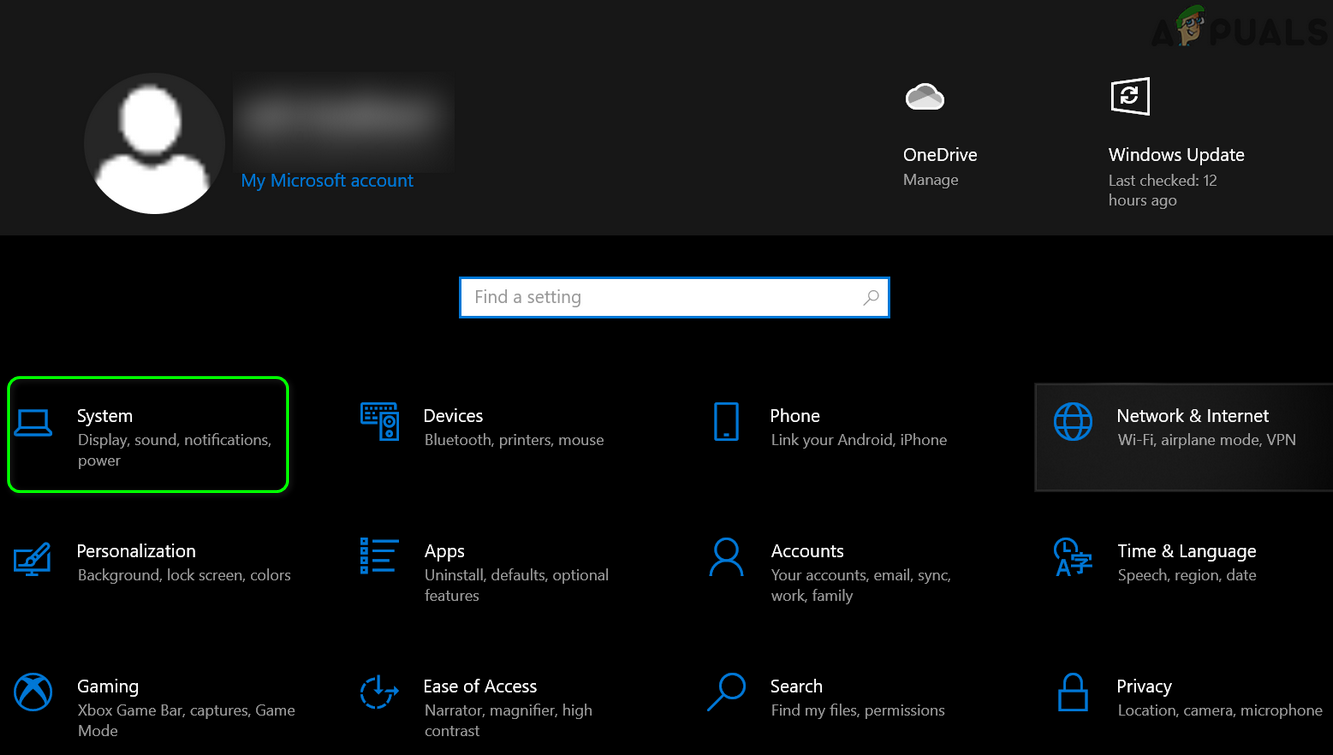
Open System in Windows Settings - Then select the required display and choose to Make this My Main Display (and if it is already main, select another display as main and then, revert the setting to the required monitor).
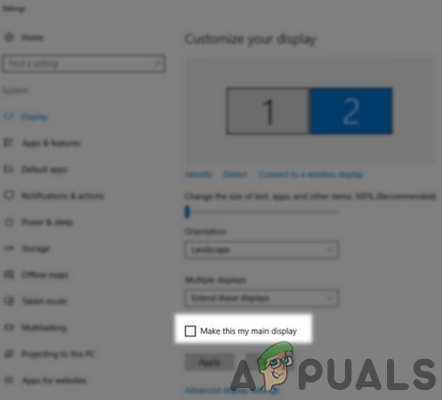
Mark the Monitor as the Main Display - Now check if the application is opening on the required monitor.
Solution 5: Switch Between the Screens
If the issue is still there, then you can solve it by switching between the screens to move the application to the required screen.
- Launch the problematic application and wait for it to load completely.
- Now press Windows + P keys to open the Project settings of your system and select Second Screen (now the application will pop back on the main monitor).
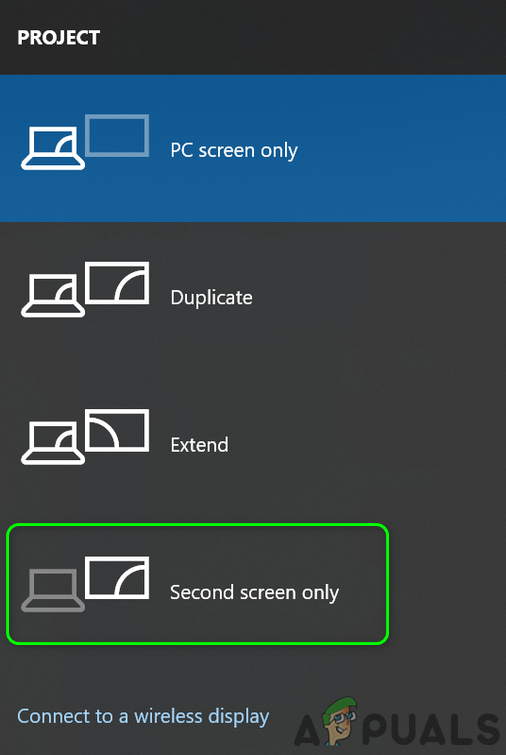
Select the Second Screen Only in the Project Settings - Again, press Windows + P keys and choose PC Screen Only.
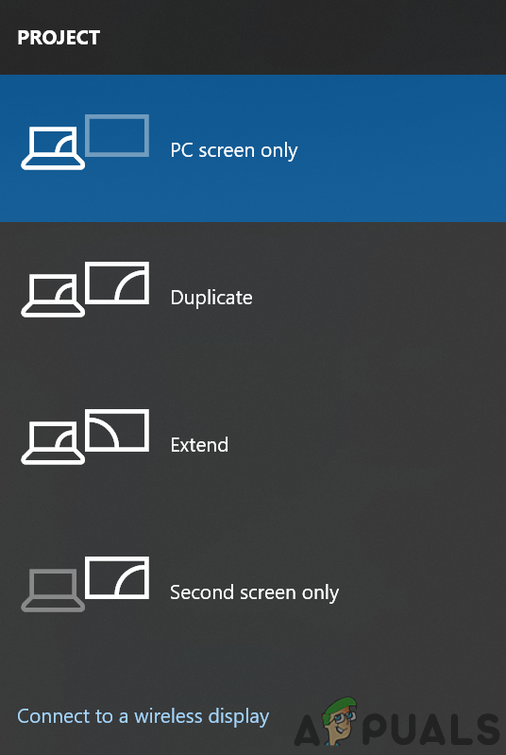
Select the PC Screen Only - Then completely exit the application and relaunch it to check if it is launching on the main monitor.
Solution 6: Use the Preview Screen
The multi-monitor configuration glitch can be cleared by moving the application to the desired monitor by using the preview screen on the Taskbar.
- Open the problematic application and hover your mouse over the application on the Taskbar of your system. Now, a miniature preview screen of the application will be shown
- Then right-click on the preview screen and choose Restore.
- Again, hover over the application and right-click on the preview screen.
- Now select Move and then use the keyboard shortcut of Shift + Windows + Arrow (right or left) to move the application to the required monitor.

Click on Restore and Then Move the Application - Then put the application in the windowed mode by pressing on the Restore button and then close it.
- Now relaunch the application and check if it is launching on the required monitor.
Solution 7: Customize the Taskbar of Your System
If none of the solutions worked for you, then you can customize the Taskbar of your system to open the problematic application on the required monitor.
- Right-click on the desktop of your system and choose Personalize.

Open Personalize - Then, in the left pane of the window, choose Taskbar, and in the right half of the window, expand the dropdown of Show Taskbar Buttons on.
- Now select Taskbar Where Window is Open and then check if you can use the start menu shortcuts to open the application on the required monitor.

Select Taskbar Where Window is Open in the Dropdown of Show Taskbar Buttons on
Solution 8: Use GitHub PowerToys
There is a GitHub project called PowerToys that enables a power user to streamline and fine-tune his Windows experience to enhance productivity. This utility does have some advanced multi-display settings that can solve the issue at hand.
- Launch a web browser and navigate to the GitHub PowerToys releases page.
- Now download the EXE file from the page and then install it with administrative privileges.
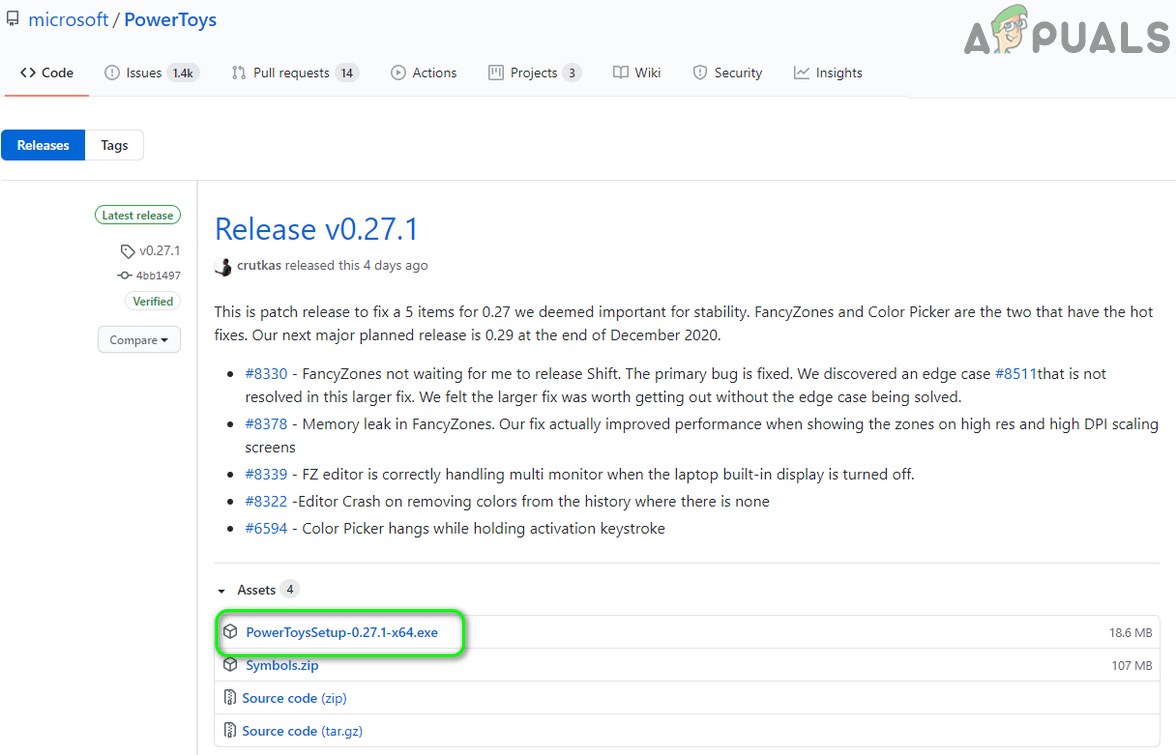
Download PowerToys - Then launch PowerToys and open its Settings. Now open FancyZones and select Edit Zones.
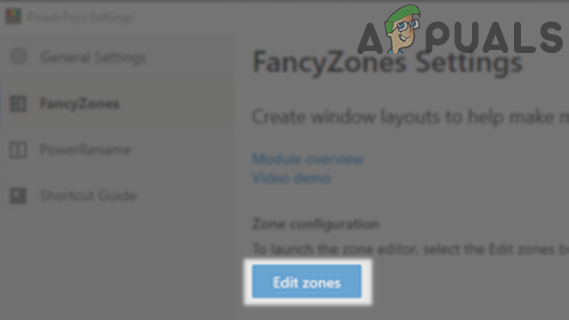
Edit Zones in the Fancy Zones Settings - Configure the layout as a row or column as per your requirement and disable the option of Show Space Around Zones (repeat on each monitor by dragging the PowerToys setting window to it).
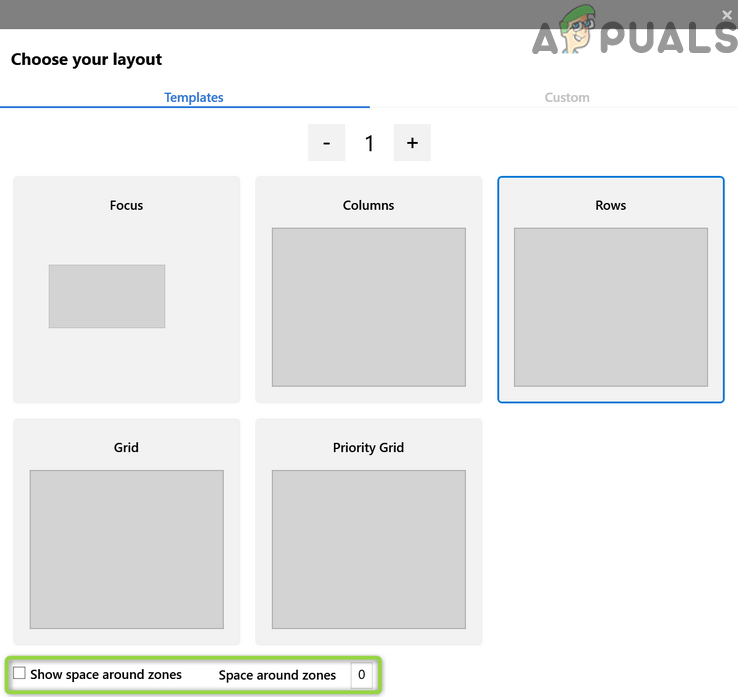
Uncheck Show Space Around Zones - Again, open the PowerToys Settings and open FancyZones.
- Now enable the “Move Newly Created Windows to Their Last Known Zone” option.
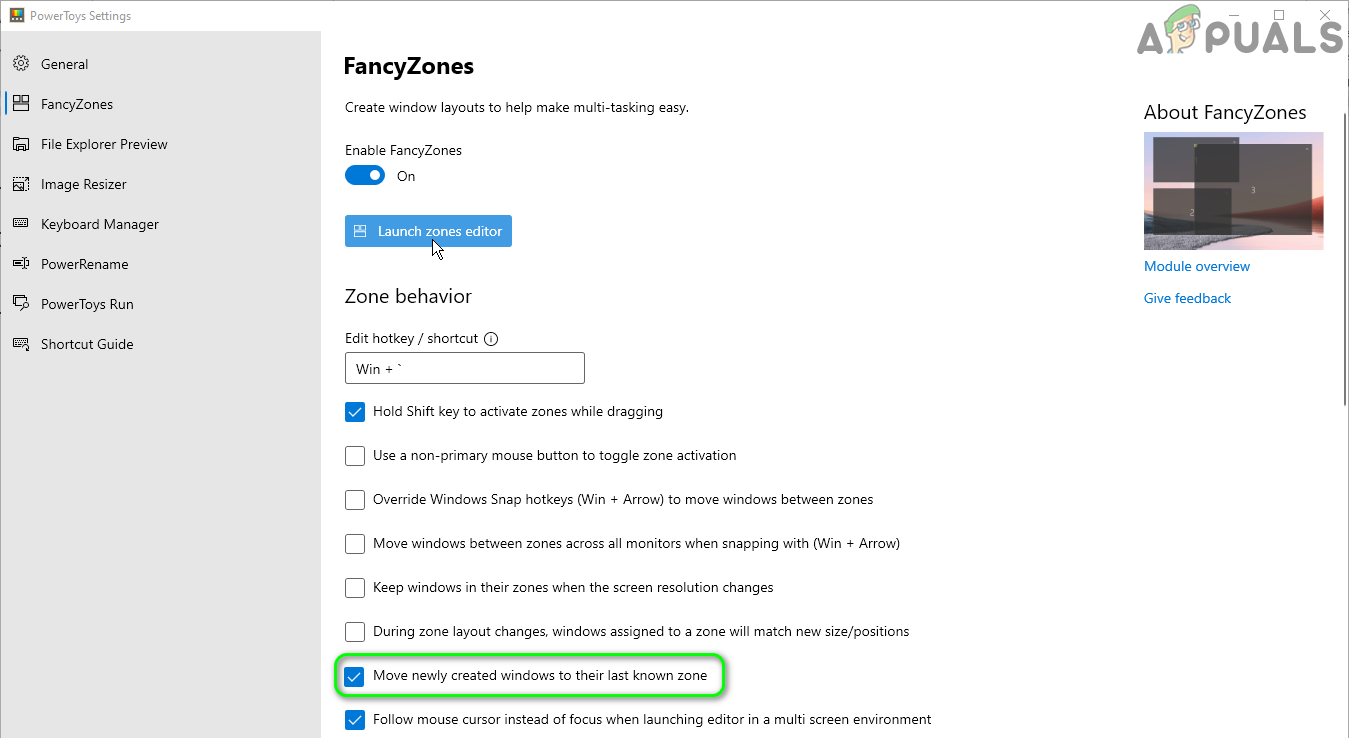
Move Newly Created Windows to Their Last Known Zone - Then drag the application to the required screen and when on that screen, press& hold the Shift key and then release the drag (this will assign the application to that screen).
- Now relaunch the application to check if it is launching on the correct monitor.
Solution 9: Create the Applications Shortcut on the Required Monitor
You can create the shortcut for the problematic application on the monitor where you want to display it and then launching the application through that shortcut may solve the problem.
- Completely exit the application and make sure no process related to it is operating in the Task Manager of your system.
- Find the location of the EXE file of the problematic application e.g., if you are encountering the issue with the Fortnite game, then its EXE file (FortniteClient-Win64-Shipping.exe) is usually located at the following location:
%PROGRAMFILES%\Epic Games\Fortnite\FortniteGame\Binaries\Win64
- Then move to the required monitor by using the keyboard shortcut (Shift + Windows + Left/Right Arrow)
- Now right-click on the desktop of your system and choose New > Shortcut.

Create a New Shortcut - Then click on the Browse button and point it to the EXE file of your application.
- Now select Next and then click on the Finish button.
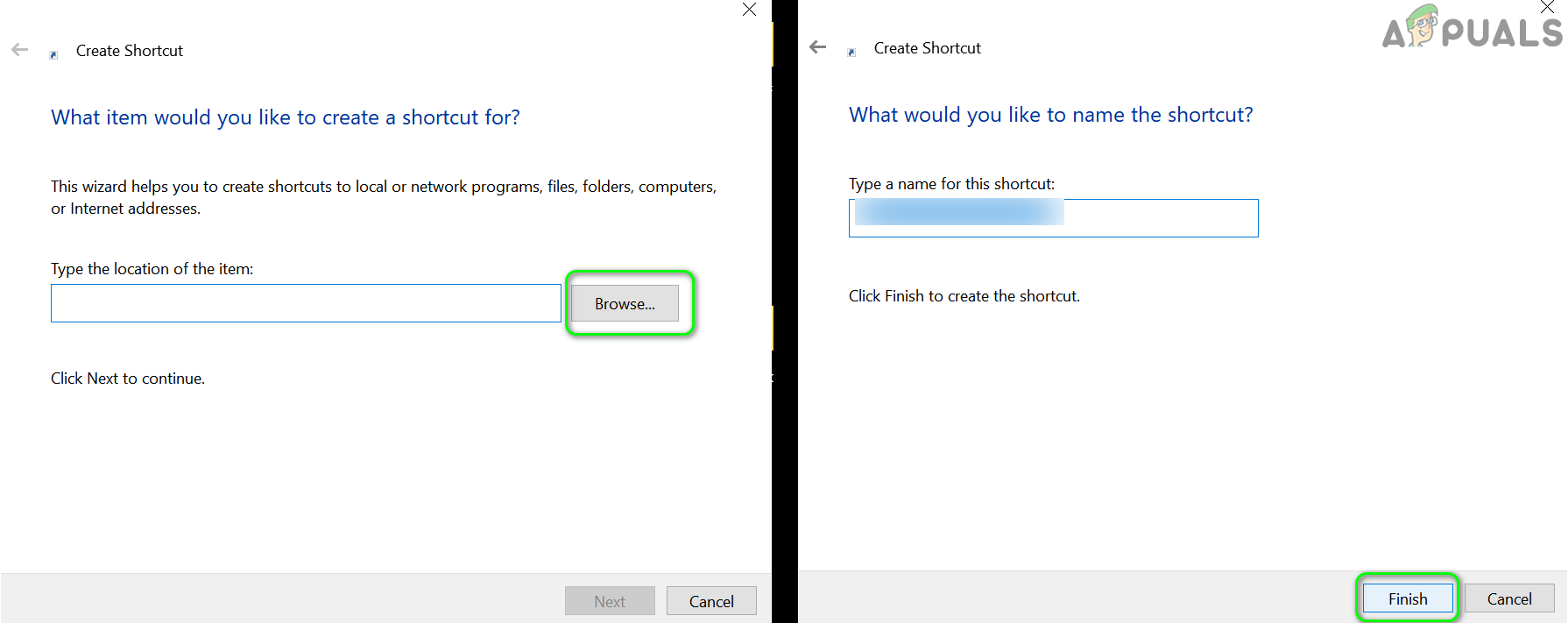
Click on Browse and Then Finish to Create the Shortcut - Then launch the application through that shortcut to check if it starts on the required monitor.
- If so, then right-click on the shortcut icon and choose Properties.
- Then open the dropdown of Run and select Maximized window to launch the application in the maximized mode on the target monitor.
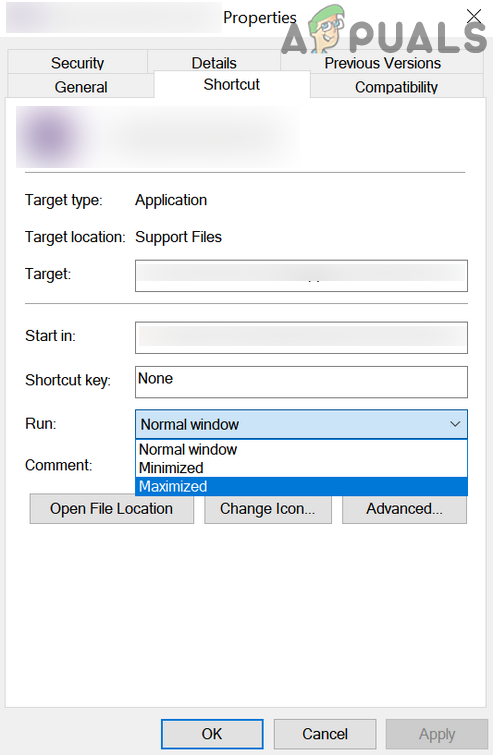
Change the Run to Maximized in the Shortcut Properties
Solution 10: Change the Application Settings and Use Command Line Arguments
Many applications especially games offer the in-game settings by which a user can define the monitor on which the game would be displayed and using this setting to launch the application to the required monitor may solve the problem.
- Launch the problematic application/game and check if its settings allow it to launch on a particular monitor. If so, then enable that setting and then check if the issue is resolved.
- If not, then launch the Steam’s client (install it, if already not installed) and enable its Big Picture mode. You can also launch non-Steam games through the Steam client.
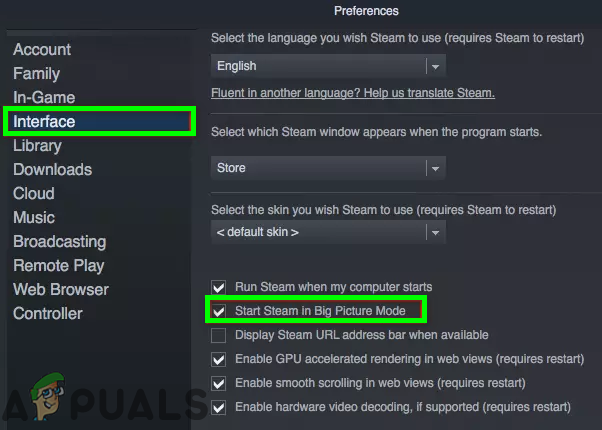
Enable Big Picture Mode in the Steam Client - Now under the Display Settings, set the monitor where you want to play the game and check if it solves the issue.
- If not, then check if editing the configuration file of the game (e.g., you can set the MonitorIndex property to 1 or 2 to choose the preferred monitor in the Neverwinter’s GamPrefs.pref file located at X:\Neverwinter\Neverwinter\Live\Localdata where X is the installation drive of the game) solves the issue for you.
- If not, then check if using the command line arguments to choose the required monitor (e.g., many Unity games support the arguments of -show-screen-selector or -adapter N, where N is the monitor where you want to display the application) solves the issue for you.
- If not, then check if using the GitHub project of Borderless gaming solves the issue for you.
If the issue is still there, then check if using a system cleaner application to clear the size or personalization solves the issue. You can also try a 3rd party utility like Window Resizer Pro (Chrome extension), PersistentWindows, PrgLnch, Ultramon, MurGeeMon, Actual Windows Manager, DisplayFusion, Nvidia Control Panel, MaxTo, etc., to solve the issue.




